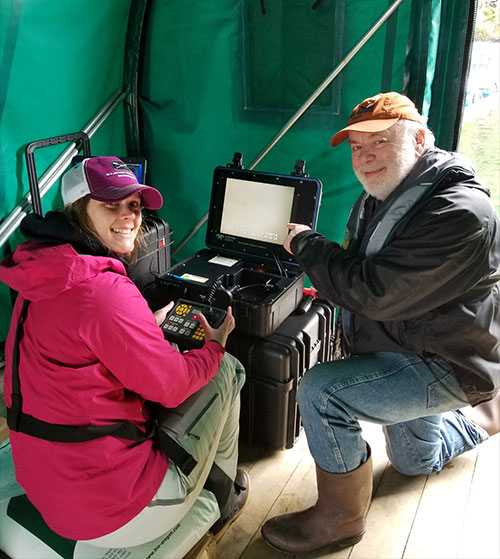
Marine Advisory Agent Teaches ROV SkillsBy PAULA DOBBYN
May 25, 2018
Alaska Sea Grant’s 12 Marine Advisory agents have done all of these things and more over the past year or so. For agent Gary Freitag, who lives in Ketchikan, a recent day found him on a floatplane ride to Neets Bay where he helped a young scientist learn how to use an ROV - a remotely operated vehicle - to examine the ocean floor at a salmon hatchery.
“I can’t imagine doing it without Gary. He was an essential part of us not getting that thing lost,” said Whitney Crittenden, lead research technician with the Southern Southeast Regional Aquaculture Association. Crittenden is studying for a professional science master’s degree in fisheries and wildlife administration through Oregon State University and Freitag is mentoring her for her capstone project. As far as learning to operate an ROV, Crittenden said, “There’s a definite art to it.” “Gary had all sorts of helpful hints, like ‘You need to let out more tether.’ Or with identifying what we were looking at on the ocean floor. You can read the manual but there’s only so much you can get from that,” she said.
The ROV that Freitag taught her to operate will be used to track organisms that live on the bottom of the sea, called the benthic community, as required by the state’s clean water quality rules. As part of the permitting process, hatchery operators must sample freshwater and seawater and conduct surveys for the presence of bacterial mats, organic debris from fish culture and indicators of anoxic sediment, Crittenden said. “Besides the operations training, I was helping interpret what she was seeing as well as identifying the animals and whether there were signs of anoxic conditions or currents. So we were looking for bubbles in the sediment, size of particles, movement in the sediments when engaging the thrusters, that sort of thing,” said Frietag. Freitag has a master’s in oceanography and is a faculty member at the University of Alaska Fairbanks, College of Fisheries and Ocean Sciences.
Representations of fact and opinions in comments posted are solely those of the individual posters and do not represent the opinions of Sitnews.
|
|||||
